This winter was a cold one, but your beach house doesn’t have to be. Hamptons designers continue to steer their clients away from the “sterile” beach house toward a new vibe: warmth. “There’s an abundance of white paint applied on walls and paneling throughout homes in the Hamptons,” said Elena Frampton, founder of Frampton Co, a studio based in Bridgehampton and New York City. The “white-out effect,” as she puts it, gets especially chilly when sprawled across large square footages and double-height ceilings.
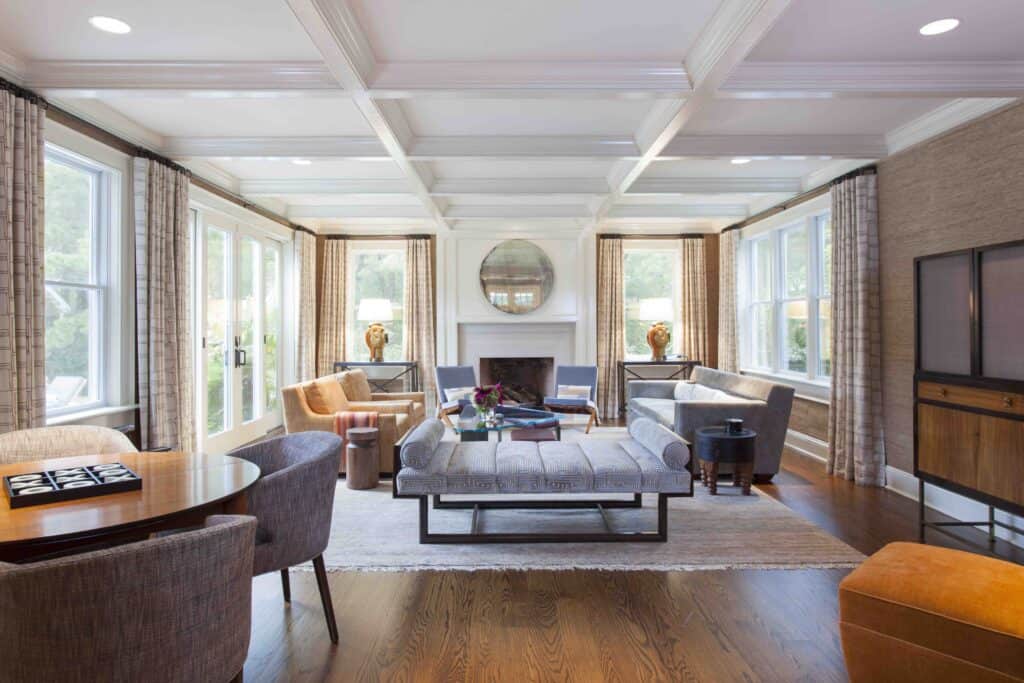
A drift away from white-washed decor started a few years ago but it’s still fairly ubiquitous, particularly in kitchens, added East Hampton-based designer Debra Geller. “Designers who don’t evolve and reinvent and come up with innovative and creative ideas get stuck in this white sterile beach house,” she said. In reality: “White is not very liveable with the amount of entertaining people do out here, and kids and dogs.”
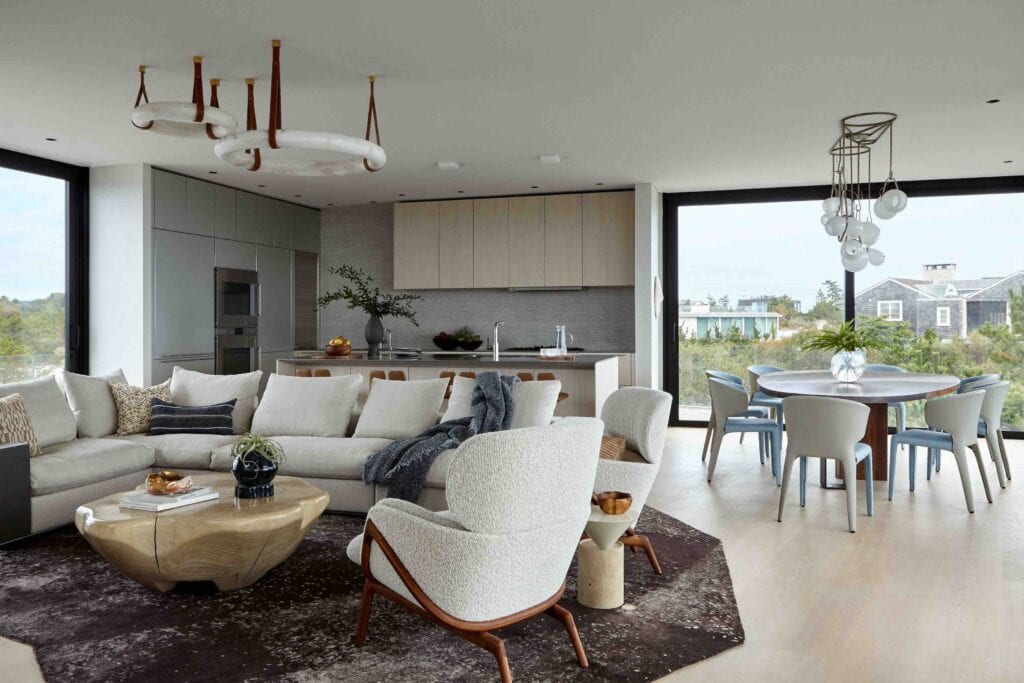
So if one were to thaw the interior of their abode, what exactly does that mean? “Warmth in the context of home is often achieved through sensorial experiences, color palette, lighting and tactility,” Frampton said. “Interior spaces can welcome us with the feeling of embrace.”
Below, our experts share tips to make things cozier.
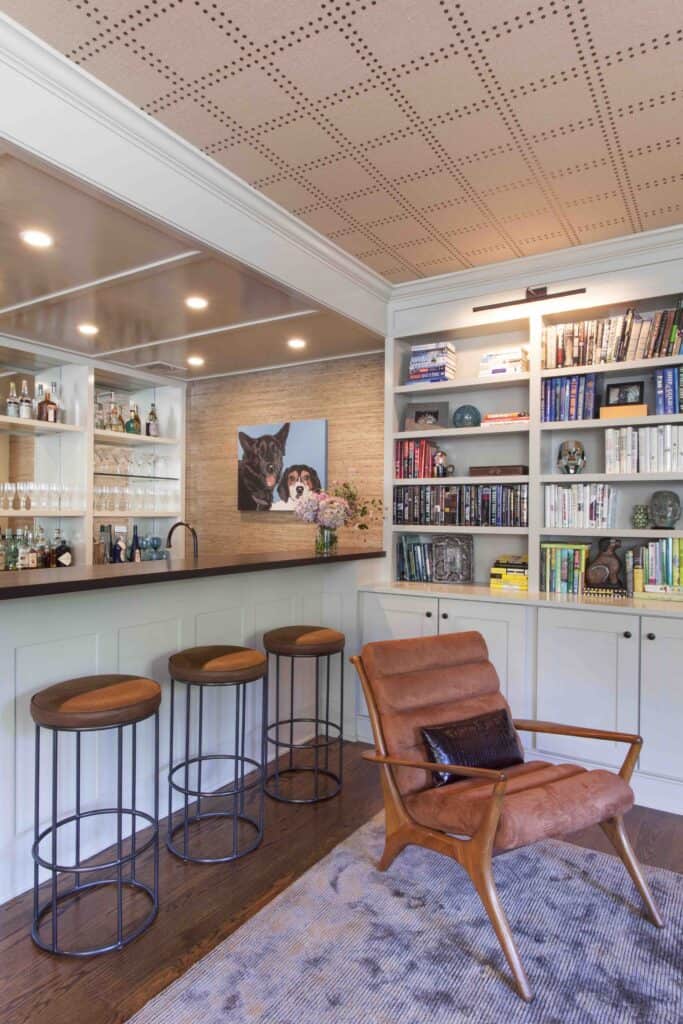
Colors
“I’m not sure who deemed a range of ‘greige’ to be the quintessential beach house palette, but I’m always aiming to bring in some color,” said Drew McGukin, a New York City designer who lives and works in the Hamptons. The surrounding environment offers plenty of inspiration, he added.
McGukin likes the pink and orange tones in seashells, the greens found in moss and blues like the waves under a night sky. This year’s Pantone color is “peach fuzz,” which he describes as floral and fresh, fits well too. “Warmer colors are Hamptons chic,” he said.
Interiors are enhanced by a varied palette of light and dark shades, Frampton agreed. “Golden tones are an especially warm counterpoint,” she said. For example, in a recent Bridgehampton dining room, Frampton used a large artwork to add yellow to the space. In an Amagansett beach house, she layered peach and rust color accents in pillows and rugs.
Framing children’s art is a charming way to add some color, added Geller. She loves black “because it’s very grounding,” but that doesn’t mean pale neutrals are banned from the scene. “You can still use creams and beiges and more grounded organic tones,” Geller assured.
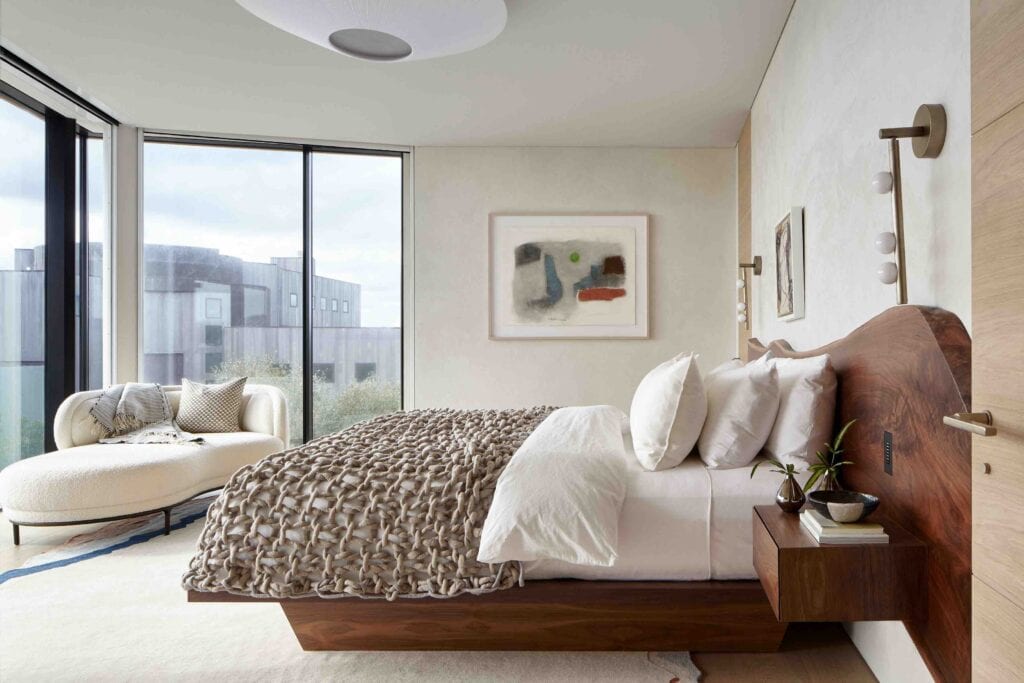
Textures
In your furnishings, “you need equal parts velvet, linen and leather, plus some brown woods and metal mixed with your bleached woods,” McGukin said.
To achieve this effect, Geller recommends incorporating collected, antique and found pieces. “Even if you’re doing a monochromatic look you can do it with textures and layers,” she said.
In a beige room, for example, add a chenille sofa, pillows with a chunky sweater material and textured wallpaper. Pairing unusually shaped accessories with stacks of books is another technique. “This way you’re bringing something in visually everywhere,” Geller said.
Don’t forget your rugs, Frampton added, but try them in unexpected spots, like hallways and transitional spaces. Wood-lined walls are a classic method but ceilings can have paneling too. “This is especially effective in warming a space if you are set on classic white painted walls,” she said.
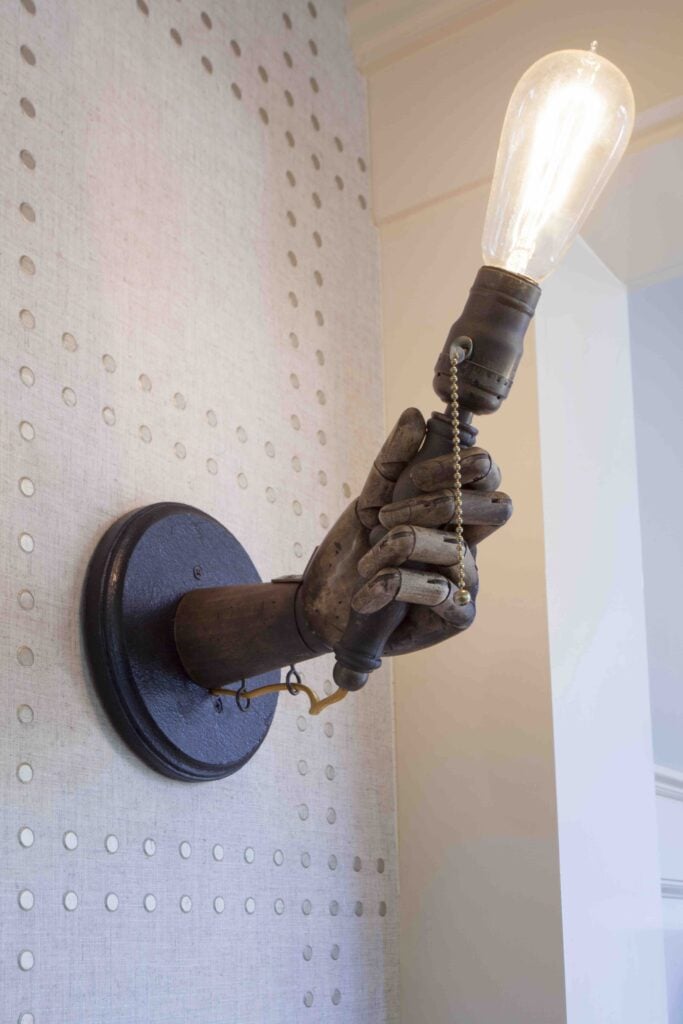
Lighting
Lighting is key to the ambiance in a home, Frampton said: “Install an array of light fixture types for spatial interest.” Decorative wall-mounted sconces add interest at the eye level while lamp shades and chandeliers made with parchment, string, or fabric add softness.
And don’t forget your mirrors to bounce the beams around, McGukin said. They’re key to depth, soul and personality. “Mirrors,” he said. “More mirrors. Always.”





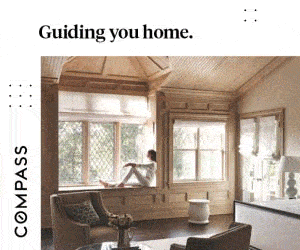

![Join us May 6th at The Harmonie Club for the Spring Salon Luncheon, a beautiful gathering in support of a truly meaningful cause. Together, we’ll raise critical funds and awareness for @campgoodgriefeeh—@eastendhospice’s summer bereavement camp helping children and teens navigate loss with compassion, connection, and healing. [link in bio]](https://hamptonsrealestateshowcase.com/wp-content/uploads/sb-instagram-feed-images/491527001_18506092897030135_3117653411609489602_nfull.webp)
![Welcome to this exquisite custom-built home in the prestigious Quogue South estate section, just moments from Dune Road and some of the world’s most breathtaking ocean beaches. Completed in 2024, this expansive shingle-style residence offers 6 beds, 7 full and 2 half baths, a separate legal guest cottage, heated gunite saltwater pool with spa, all set on a beautifully manicured 0.74± acre lot. Represented by @lauren.b.ehlers of @brownharrisstevens. [link in bio]](https://hamptonsrealestateshowcase.com/wp-content/uploads/sb-instagram-feed-images/491516869_18505931593030135_4655757731678000577_nfull.webp)
![Discover 11 Oyster Shores, a unique marriage of thoughtful design, uncompromised execution and meticulous craftsmanship expressed across nearly 6,000± sq. ft. of highly curated living space. Brought to life under the watchful eye of Blake Watkins, the visionary behind WDD, the project is a refreshing departure from the ordinary. Represented by @nobleblack1 of @douglaselliman. [link in bio]](https://hamptonsrealestateshowcase.com/wp-content/uploads/sb-instagram-feed-images/491440257_18505740808030135_9064730571228880657_nfull.webp)
![Reserve your ad space now in the Memorial Day “Summer Kick-Off” Issue of #HRES! 🍋 Be seen by high-end buyers and sellers across the Hamptons, Manhattan, and South Florida—just in time for the start of the season. Secure your spot today and make waves this summer 🌊☀️ [link in bio]](https://hamptonsrealestateshowcase.com/wp-content/uploads/sb-instagram-feed-images/491441694_18505573426030135_4475989184561040528_nfull.webp)

![Tuesday, April 15, was Tax Day for most, but for someone in Palm Beach, it was closing day! The nearly 8,00± sq. ft. Mediterranean-style residence at 240 N Ocean Boulevard, with direct ocean views and a private, 100-foot beach parcel, closed at exactly $26,670,750. The seller was represented by Jack Rooney of @douglaselliman and Elizabeth DeWoody of @compass while Dana Koch of @thecorcorangroup brought the buyer. [link in bio]](https://hamptonsrealestateshowcase.com/wp-content/uploads/sb-instagram-feed-images/491445351_18505056166030135_4907944420436119099_nfull.webp)
![Previously featured on our 2024 Columbus Day issue cover, 74 Meeting House Road has officially sold! This stunning new construction in Westhampton Beach offers the perfect blend of thoughtful design and timeless style. Congratulations to @kimberlycammarata of @douglaselliman who held the listing! [link in bio]](https://hamptonsrealestateshowcase.com/wp-content/uploads/sb-instagram-feed-images/491441951_18504901357030135_2664904795600183799_nfull.webp)
![Located South of the highway in Southampton this 4 bedroom, 5.5 bath multi-story property, offers extensive exterior architectural detail throughout. 60 Middle Pond Road offers breathtaking views and tranquil living, nestled along the serene shores of Middle Pond and Shinnecock bay. Represented by @terrythompsonrealtor @douglaselliman. [link in bio]](https://hamptonsrealestateshowcase.com/wp-content/uploads/sb-instagram-feed-images/491451873_18504686110030135_5284427082339135969_nfull.webp)
